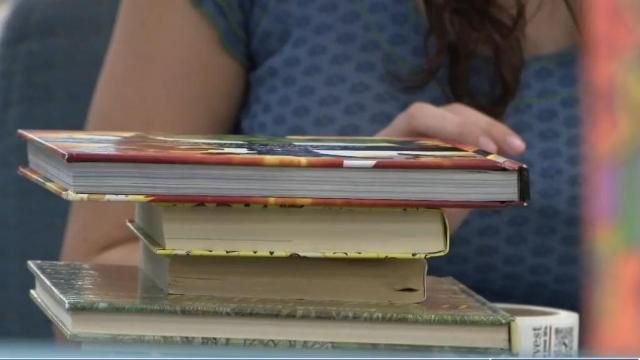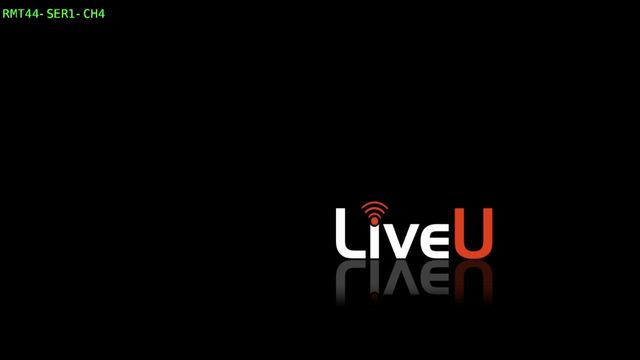Few NC students with learning disabilities are passing. Will NC's new reading program help them?

When Leah Rumbarger adds up the dollars her family has spent on education services for her dyslexic daughters, she wonders how most people could ever afford it.
Her family spent $4,000 for two diagnoses, thousands more for private tutoring, and thousands more for private high school tuition — all just to get their daughters to read at grade level.
“If you don't have money, I don't know how people are able to get their kids help or even identified for that matter,” said Rumbarger, who works as a marketing manager.
It’s a common story among many North Carolina parents of dyslexic children: They struggle to get their children what they need at public schools, which can be inconsistent in their abilities to help students with learning disabilities. Specialized private schools can help, if families can afford them. But private schools aren’t required to provide special services or even accept children with disabilities, and many don’t. And even some families receiving useful in-school support are still paying extra for private tutoring.
They worry about their children falling further behind. And they question whether educators are sufficiently trained — or if schools have enough resources — to accommodate children with a reading disability.
Their experiences illustrate priorities for North Carolina educators seeking to improve literacy for all. They also highlight struggles for a population that’s bigger than most school systems in the state.
North Carolina education leaders say the state is taking steps toward improving reading instruction for children with dyslexia. New reading curricula and practices should help more children with reading disabilities by catching their disabilities sooner and by providing instruction better suited to help them, they say. The one-time training on that curriculum, currently centered on the youngest students, will expand to higher grade levels in the coming years.
Teachers are also being trained to better screen children for reading deficits; instead of deeming a child OK because they passed a short test, teachers are supposed to look at how the child performed on each skill being tested.
The state is already seeing some gains in early literacy test scores, at the same time as intensive tutoring programs have expanded.
Parents of children with reading disabilities are encouraged by the changes. But they say more training and resources are needed to spot disabilities and help students with them. For older students, the changes are too little too late, they say.
Few North Carolina students with learning disabilities are testing proficiently in reading, state test data show. Less than 10% of them tested proficiently in reading and math last spring.
North Carolina’s efforts to change reading instruction to a system — from focusing on context clues to emphasizing phonics — won’t happen overnight. It requires the replacement of old resources with new ones, ensuring programming aligns with the new approach to reading, retaining teachers, training educators to spot disabilities and providing resources such as tutoring and curricula to help students with dyslexia.
“One of the things that has to happen is better teacher preparation and also better preparation of the administrators, because it's not teachers that are usually choosing curriculum,” said Louise Spear-Swerling, vice president of the Center for Effective Reading Instruction, a Maryland-based nonprofit organization that certifies professionals who teach reading.
Sometimes one curriculum doesn’t work for a child as well as another one does, but the school system has only purchased one.
Special education teachers often also note the difference between what they learn in college and what they’re actually able to do in a classroom.
“Everything you learn is what's best practice, and what is the ideal,” said Nichole Miller, a program coordinator at a developmental day school who also has children with dyslexia. “And then you get into your job and you realize that that almost never happened, that the resources and the expectations are so different, that you have to modify everything to survive versus being able to do this practice.”
She has struggled to get services for her dyslexic sons, who have mostly attended charter schools. She briefly sent one of her sons to a private school, where he was able to receive more one-on-one attention.
“There aren't enough resources [in public schools], there's not enough space, there's not enough teachers,” said Miller, who previously worked as a public school special education teacher. Miller still sends one of her sons to a public charter school. She now homeschools her other two.
Years of catch-up
Nearly 70,000 public school students across the state are enrolled in special education for specific learning disabilities recognized under federal law — a population that, by itself, would make it the third-largest school system in the state, behind only Wake County and Charlotte-Mecklenburg. And many more students go undiagnosed, and without services.
Parents and experts have long blamed the state and federal government for underfunding North Carolina’s special education programming.
In 1975, Congress passed a law now known as the Individuals with Disabilities in Education Act. It’s intended to ensure children with disabilities have access to a free and appropriate public education via services that address their unique needs. But Congress hasn’t appropriated the dollars that the law promised.
The North Carolina General Assembly allocates taxpayer dollars to cover some of the cost but caps per-student contributions at a level far below the actual number of students with disabilities in the state. Several reports — including some commissioned by the General Assembly itself — have for decades recommended removing the cap and providing funding based on student needs, but lawmakers haven’t made major changes.
Experts say dyslexia isn’t a life sentence. People with dyslexia can learn to read more fluently through rigorous, regular instruction. But the older they are, it can take years to complete.
Not learning to read proficiently can hinder a student’s progress in other courses. About a quarter of students with specific learning disabilities passed their science exams in spring 2023, compared with about two-thirds of students overall. About one in seven students with specific learning disabilities passed their biology exams in spring 2023, compared with more than half of students overall.
“For a child who is dyslexic, the sooner we can intervene, in kindergarten, in first grade… the more likely it is that they are going to be at [grade level],” said Amy Rhyne, director of the state Department of Public Instruction’s Office of Early Learning.
When disabilities aren’t identified early, it can take tens of thousands of dollars in tutoring and testing for school systems or parents to bring students with dyslexia up to speed. While federal law requires school systems to pay for interventions for students with disabilities, many parents say they end up footing those bills themselves.
Many parents say their children were reading poorly in school, but that they didn’t know they could ask the school system to test their children for a suspected disability — and that the school never recommended it. In some cases, parents said they struggled to get their dyslexic children tutoring often enough in school or that schools weren’t using a preferred reading program.
DPI is expanding its literacy training to middle schools to help those kinds of students.
“We recognize that children don't stop learning after fifth grade, and their teachers also need this content knowledge,” Rhyne said.
Miller said she’s paid for private evaluations and interventions they don’t get at school.
“I've pretty much given up on expecting the school to be able to do anything about it,” she said. She says private resources have been the most effective way to help her children.
“If I were to wait for the school to do it, they either wouldn't, or … the level of effectiveness is not enough to make it worth [it],” she said.
A change in reading instruction
North Carolina, like other states across the country, is transitioning away from early reading instruction that emphasizes independent reading and using context clues to guess unfamiliar words. The state is moving toward a new system, known as “the Science of Reading,” that focuses on phonics, fluency, comprehension and vocabulary. That means more focus on individual letters and sounds, and not letting students guess words. It’s more hands-on.
The approach aligns with decades of research on how the human brain learns written language.
Children with dyslexia are likely to benefit from the shift, education experts say. Dyslexia is a disorder in which a person struggles to process and master individual sounds and their connection to letters, making explicit and rigorous phonics instruction more relevant to the way they learn. A dyslexic person might have difficulty recognizing rhymes or letters or have trouble combining letters into longer sounds.
According to the federal Individuals with Disabilities in Education Act, if an educator or a parent suspects a child has a disability, they can refer the child for testing. The school must provide the testing, whether using their own licensed psychologist or by paying for a contracted psychologist.
If a child’s academic performance is found to be negatively affected by their dyslexia, the school must, with the parents’ consent, create an individualized education program for the student. The IEP should be designed to provide accommodations or services to a student, with the goal of getting the student to where they should be academically.
‘It shouldn’t be this hard’
Kristin Eck had been trying to get reading-education resources for her son since 2020, when he was a pre-kindergartener. He got small-group instruction and made incremental progress, but Eck didn’t think it was enough. Her son was falling behind his peers and began to believe he was “stupid,” she said. The school said he was making progress and therefore wouldn’t give him an individualized education program, Eck said.
“He would say that ‘I can't do it’ and ‘[I’m] stupid’… which is excruciating to have your child say this and believe that about themselves,” she said, “and the school is on the other end saying, ‘They're OK.’”
Her son couldn’t read short words like, “cat,” “dog,” or “pig.”
He got an IEP in 2023. Eck was still paying for private tutoring. Shortly after that, Eck decided she’d apply for a private school scholarship, provided by the state, specifically for families of students with disabilities.
“Having met the teachers and the administrators [at his public school], it's not a lack of them wanting to do what's right for him and for the other kids that need resources, but it just seems as though they don't have the resources to do what's right, and what's needed,” Eck said. She doesn’t want her son’s former public school to be penalized and said educators there were trying their best.
Eck removed her son from Wake’s Ballentine Elementary and enrolled him in The Fletcher Academy in Raleigh, where he can get more specialized and individualized attention. The Fletcher Academy specializes in teaching students with specific learning disabilities or with attention deficit/hyperactivity disorder. It has a student-to-teacher ratio of five-to-one — well below the ratio in Wake schools.
[Disclosure: Executives of WRAL's parent, Capitol Broadcasting Co., sit on the board of The Fletcher Academy.]
“It shouldn't be this hard for parents to give their children — for the state to give its children — appropriate education,” Eck said. “That's the law.”
The Wake County Public School System didn’t respond to a request for comment. Like other school systems, the district’s teachers have been training on new reading techniques, and the district has assigned Science of Reading-aligned curricula for its youngest grades.
One of Leah Rumbarger’s daughters was diagnosed with dyslexia in California, where she was given a special education plan to help her succeed in school. But after moving to North Carolina, she struggled to get help at her public middle school.
Rumbarger’s experience in California had been transformational. She and her family had moved them from Ohio, where her twin daughters got tutoring for their reading struggles but where the school never recommended them for an evaluation for a learning disability or special education.
When she moved to California, her new middle school recommended an evaluation for one of the twins. Rumbarger’s daughter then got an individualized education program that gave her accommodations and interventions to do well in reading.
That wasn’t the case soon after in North Carolina, where Rumbarger says she repeatedly petitioned her Wake County school, West Cary Middle, to have both of her daughters evaluated for a learning disability, even though records from California indicated one had been diagnosed with dyslexia and both were testing below grade level in reading.
The interventions the Wake school eventually provided didn’t align with what the private tutors were doing at home, and the school wouldn’t provide another program. Rumbarger was still paying for the at-home tutoring. Eventually, Rumbarger enrolled her daughters in a private school. The private school doesn’t have a federally funded special education program, so she still pays thousands of dollars for private tutoring for her daughters. But Rumbarger prefers the smaller class sizes and that her daughters get more feedback on what they got wrong on tests.
What parents say they need
Parents credit individual, intensive instruction for being the most effective for their children.
Beth DiFazio, whose three sons have attended Riverwood and Riverdale elementary schools in Johnston County, has had more positive experiences than some of other Triangle parents of children with dyslexia.
DiFazio didn’t recognize any learning challenges with her oldest son, now a fifth-grader, until the COVID-19 pandemic in 2020, when many students were forced to learn from home. He couldn’t pass his reading assessments and mixed up his B’s, P’s and D’s, but he read entire picture books aloud. She realized he had memorized the words and wasn’t reading them with his eyes.
DiFazio paid for a private neuropsychological assessment while the school was still closed, got a dyslexia diagnosis and took the results to Riverwood.
There, teachers and officials agreed with the findings and even tested for vision, hearing and speech issues to make sure her son didn’t have any other challenges. Within two months, DiFazio’s son had an individualized education program with provisions to help him succeed, including 75 minutes of extra help in individual or small-group sessions each day.
He can now sound out words he’s never seen before. He feels he belongs in the classroom alongside his friends, instead of feeling ashamed while staring at a piece of paper he couldn’t read, DiFazio said.
“We've seen such a 180 shift,” she said, adding that he’s happy, less anxious and wants to go to school.
Her younger twin sons are now benefiting from Science of Reading-based instruction in the younger grades at Riverdale, and they are reading fluidly, she said.
But parent satisfaction can vary widely school-to-school. A big factor is whether school administrators understand dyslexia and whether their school has an appropriate program for dyslexic students that’s fully staffed.
Candice Robinson was an administrator at the charter school, the Exploris K-2 campus in Raleigh, her dyslexic daughter attended but ultimately had to file legal action against the school to get her daughter services when she couldn’t read as a second-grader. Robinson ended up paying out-of-pocket for tutoring. After moving to a new charter school in third grade, where her special education teacher coordinated with the private tutor, her daughter became a fluid reader by the end of fifth grade.
Robinson says ongoing changes to reading instruction are a good thing, and they’re only a start.
“The [training] isn't really going to do a whole lot other than to say, from the state perspective, every K-6 teacher was trained on how to teach reading,” said Robinson, who now teaches in the Wake County Public School System. “It still comes down to having to have the appropriate materials and having the curriculum and the instructional time to implement that, so that it's done with fidelity. And we don't just do it one day, and then forget it the next day, because we didn't have time to do it. So I think it's a great beginning.”













